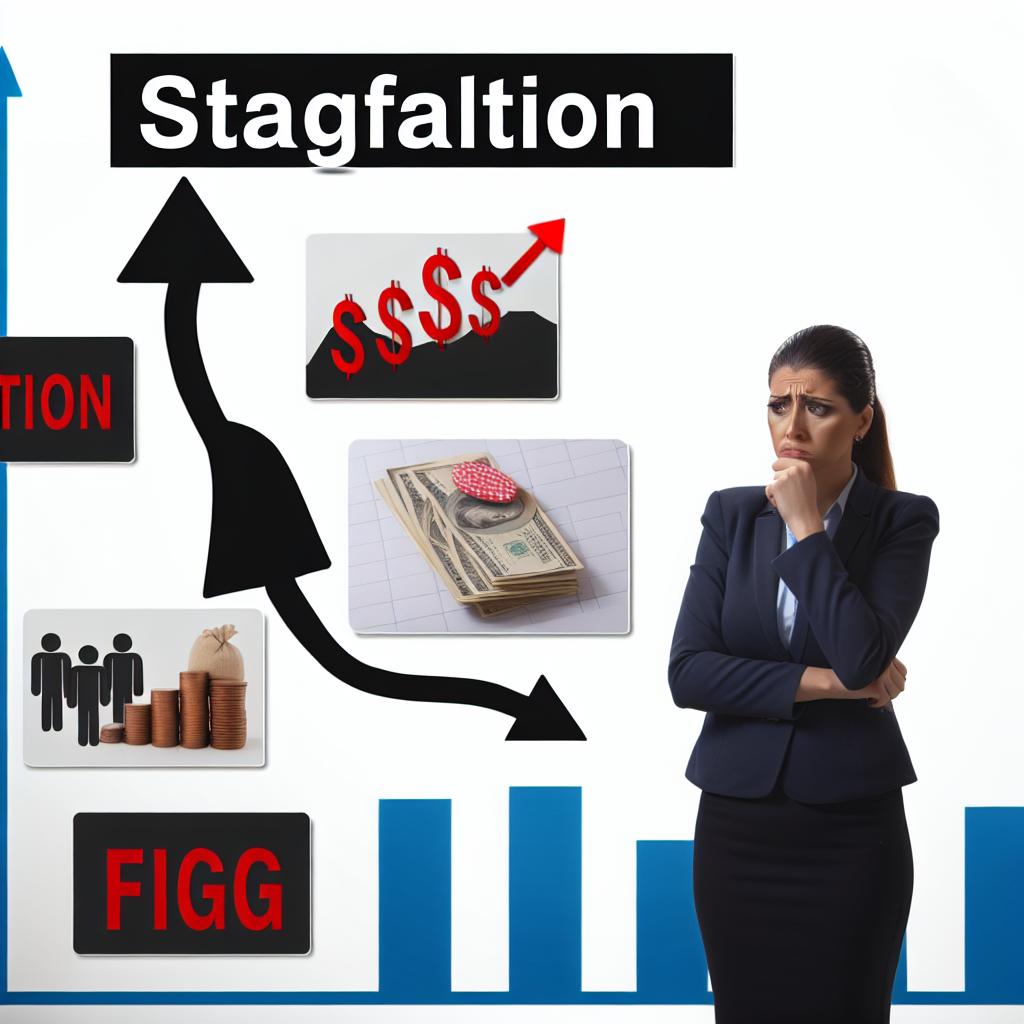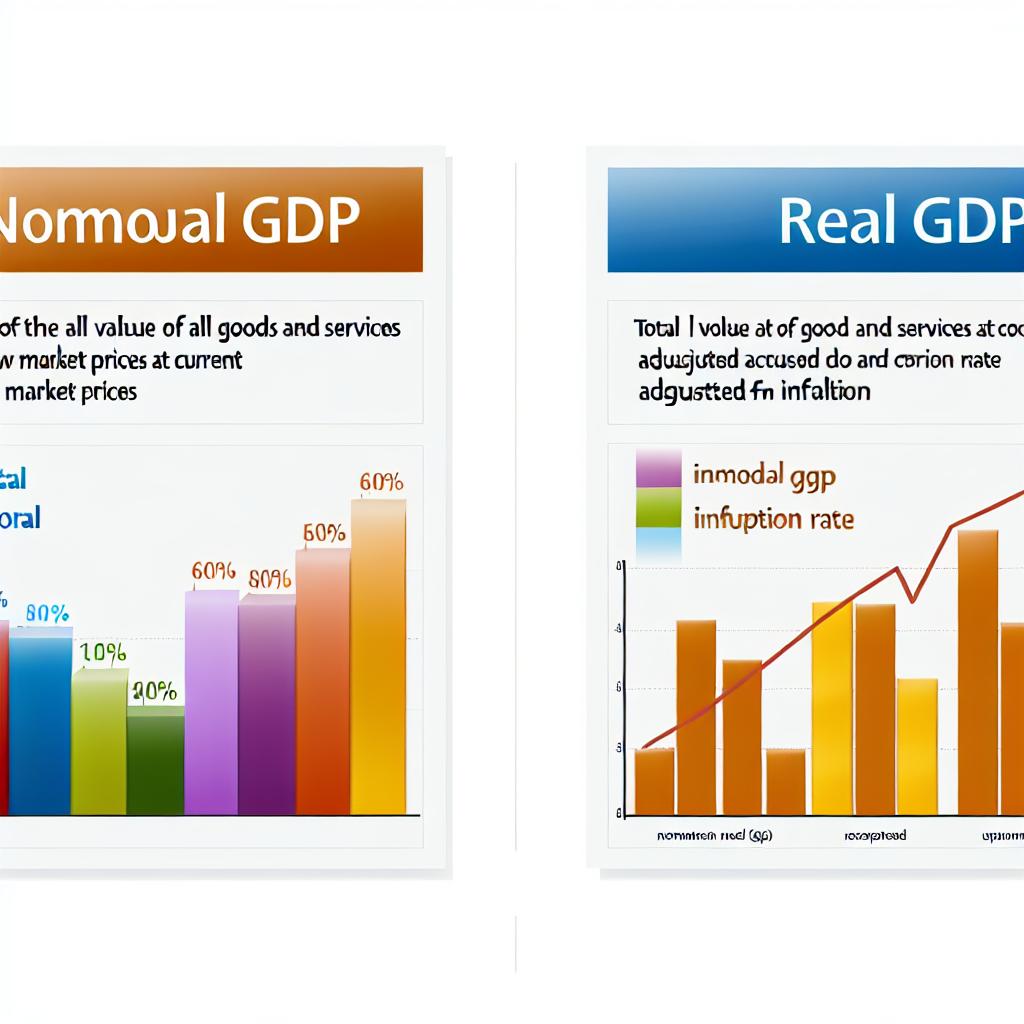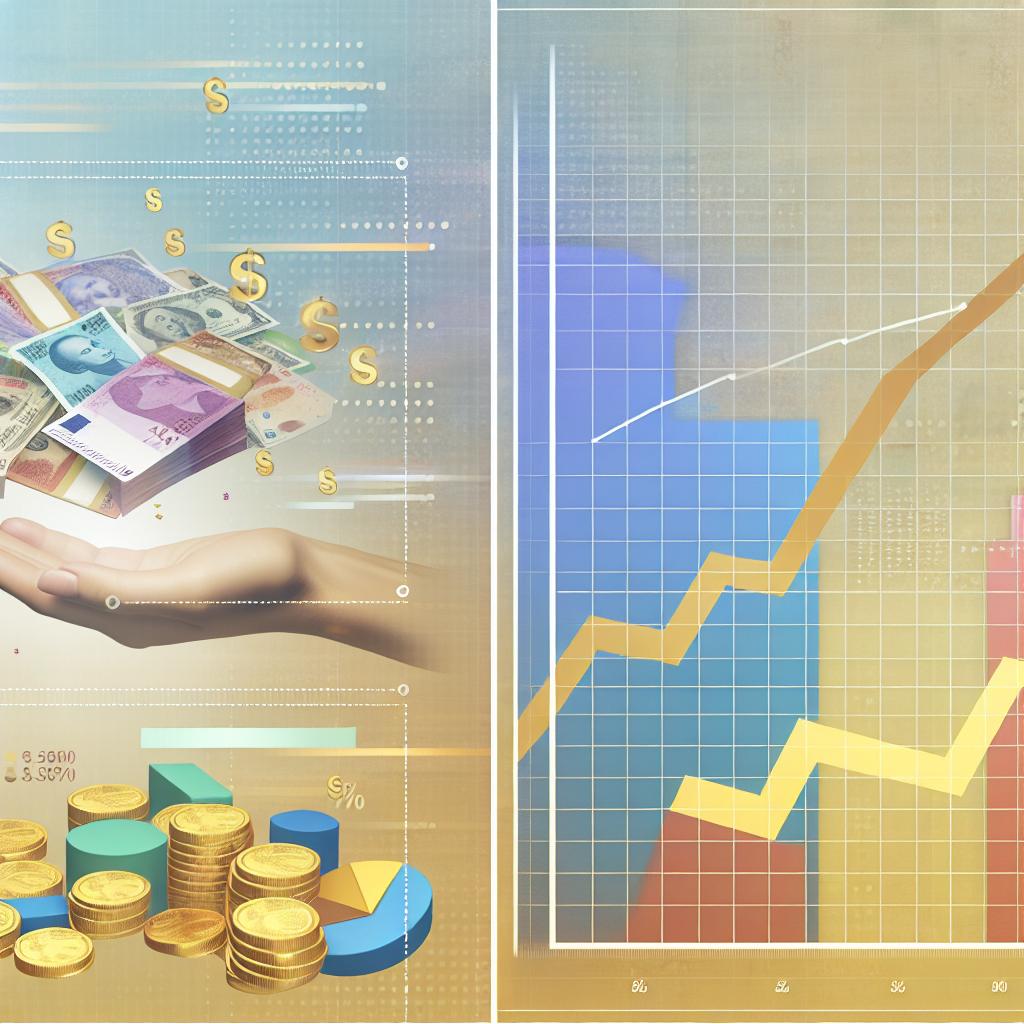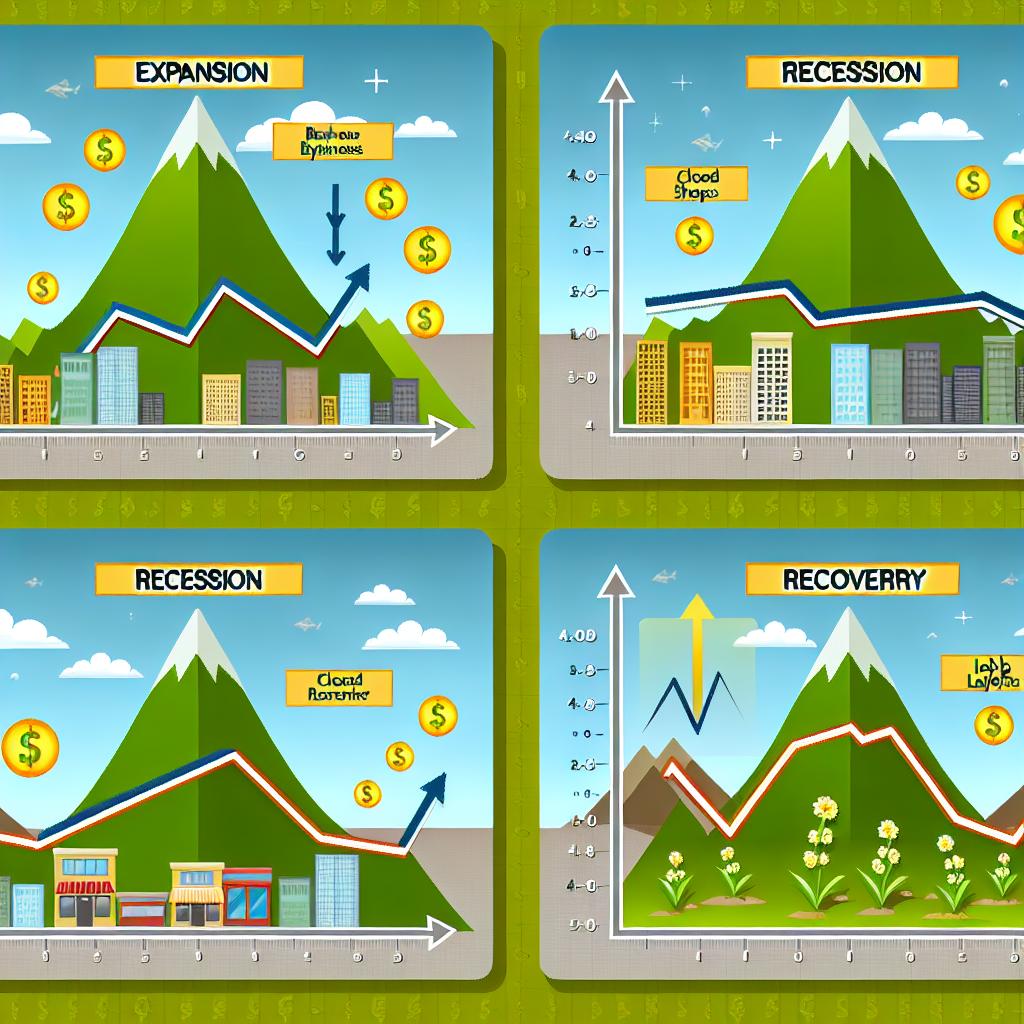Archives: What is Stagflation and Why is It a Concern?

Understanding Stagflation
Stagflation is an economic condition characterized by the simultaneous occurrence of stagnation and inflation. This rare phenomenon can present significant challenges for policymakers and economists. Traditionally, inflation and economic growth are thought to be inversely correlated; however, stagflation represents a deviation from this norm.
Components of Stagflation
Stagnation refers to slow or negligible economic growth, often accompanied by a rise in unemployment rates. During periods of stagnation, an economy may struggle to produce enough jobs, resulting in increased economic hardships for individuals. When economic growth stalls, the production of goods and services declines or remains flat, which affects job creation negatively. Consequently, the unemployment rate rises as businesses feel pressure and may be unable to maintain their workforce levels. Individuals who are unemployed during such times often face significant financial challenges, as the job market becomes highly competitive, with limited opportunities.
Inflation is the rate at which the general level of prices for goods and services rises, eroding purchasing power. In normal circumstances, inflation can be a byproduct of healthy economic growth, signifying increased demand. However, when it occurs alongside stagnation, it complicates economic conditions. Inflation in such a scenario means that people are spending more on goods and services while their income remains static or even decreases due to stagnation. This causes distress among consumers, who see their purchasing power diminish as their expenses rise while income remains unchanged.
Possible Causes
Stagflation is typically triggered by a combination of external and internal factors. Key causes include:
1. Supply shocks: Sudden disruptions to the supply chain, such as significant increases in the cost of essential commodities like oil, can contribute to increased production costs, leading to both stagnation and inflation. Supply shocks can abruptly increase the cost of raw materials, making production more expensive and reducing the profitability of businesses. This situation can lead to companies raising prices to maintain profit margins, thus contributing to inflation, while simultaneously cutting jobs or avoiding new hires, which adds to stagnation.
2. Monetary policies: Misguided monetary policies, such as excessive money printing, can cause inflation without corresponding economic growth. When a central bank introduces too much money into the economy without a corresponding increase in goods and services, it may result in more money chasing the same number of goods, which drives prices up. In a stagnant economy, this newly available money does not lead to investment in growth but rather contributes to inflationary pressures.
3. Structural problems: Inefficiencies in an economy, such as inflexible labor markets or regulatory constraints, may hinder growth while allowing inflation to persist. Structural problems can include rigidities in the job market, outdated production technologies, or policies that discourage innovation and entrepreneurship. Even if more jobs are required to stimulate growth, such barriers can prevent effective responses to this need, contributing to ongoing stagnation. At the same time, these inefficiencies can lead to wasted resources, increasing costs, and subsequently driving inflation up.
Why Is Stagflation a Concern?
Stagflation poses a unique challenge since traditional economic policy tools are not well-suited to address it effectively. For example, standard measures to combat inflation, such as raising interest rates, might further stifle economic growth. Conversely, measures designed to stimulate growth, like cutting interest rates, can exacerbate inflation. This creates a difficult situation for policymakers who need to address both stagnation and inflation. The traditional economic toolkits offer solutions that are often contradictory when it comes to stagflation, highlighting the complexity and difficulty of the issue.
Policymaker Challenges
The dilemma arises in choosing the right balance of policies that can address both facets of stagflation. Central banks and governments must carefully design policies that do not amplify either stagnation or inflation. This can involve a mix of monetary and fiscal strategies tailored to the root causes of the specific economic context. Often, policymakers need to adopt a cautious approach, analyzing the specific causes of stagflation in a given situation before implementing measures. This may require innovative solutions or a combination of targeted interventions that aim to address underlying structural issues, improve productivity, and stimulate selective areas of the economy without adding to inflationary pressures.
Stagflation can have lasting effects, eroding consumer and business confidence. It can dampen investment, as businesses remain cautious about future economic conditions. Persistent stagflation can lead to a cycle of reduced productivity and innovation, further entrenching economic stagnation. Businesses are likely to hold back on investments when economic conditions appear uncertain or unprofitable in the long term. Additionally, a pervasive sense of uncertainty can result in delayed consumer spending and cautious financial planning, which further stagnates the economy. The long-term impact of stagflation is significant and can contribute to an environment of economic instability. Businesses, feeling uncertain about market conditions, may hesitate to invest in new ventures or innovation, which further reduces opportunities for growth. Similarly, reduced consumer spending can prompt businesses to limit production and cut workforce numbers, creating a downward economic spiral. Over time, this can become self-reinforcing, as stagnation begets more stagnation, and inflation continues unchecked. For a more in-depth understanding of how economies navigate these challenges, you may consult resources from expert economic institutions, such as the International Monetary Fund. Reliable data and analyses can offer insights into current trends and historical precedents for stagflation management. Studying past instances of stagflation and the measures taken by different economies can provide valuable lessons on how to handle or even prevent such conditions in the future. Understanding stagflation and its implications is crucial, as it strips away the predictability that accompanies traditional economic cycles. Policymakers and businesses must remain vigilant, equipped with flexible strategies to navigate this complex economic environment. Knowledge of stagflation is an essential part of economic literacy, emphasizing the importance of strategic planning and diverse policy tools. Ultimately, the ability to foresee potential challenges arising from stagflation and adapt accordingly will be crucial in ensuring long-term stability and growth.Conclusion
Archives: The Difference Between Nominal and Real GDP

Understanding Nominal GDP
Nominal Gross Domestic Product (GDP) is a fundamental economic indicator that measures a country’s overall economic output in monetary terms using the prevailing market prices of goods and services. This measure does not account for inflation, which means it presents a picture of economic activity based on current price levels. It’s typically calculated over specific periods, such as annually or quarterly, to provide insights into the economic conditions and growth trends of a nation.
Characteristics of Nominal GDP
Nominal GDP has distinct characteristics that make it an essential tool for economists and policy-makers.
Current Prices: This feature indicates that nominal GDP reflects the market value of goods and services using the prices that are current in the year this economic measure is evaluated. Hence, nominal GDP gives the monetary value of economic production without filtering out the impacts of inflation or deflation, which can sometimes skew the perception of actual economic activity.
Economic Indicator: Despite its limitations, nominal GDP offers significant insights into the immediate economic health of a country. It provides a snapshot of the economy’s output, presenting an understanding of the country’s economic activity in terms of money. Observing changes in nominal GDP can help economists identify growth trends and cycles of recessions or expansions.
Inflation Impact: A major limitation of nominal GDP is its susceptibility to inflationary distortions. When there is an increase in the general price level within an economy, nominal GDP might indicate economic growth, even when the actual output volume has stayed the same or decreased. This often requires supplementary data to make accurate assessments and foster informed economic decisions.
To gain comprehensive insights into how GDP is measured, consulting resources from renowned economic institutions, such as The World Bank, could be beneficial.
Understanding Real GDP
Real GDP serves as a crucial tool for assessing the true growth and size of an economy by adjusting nominal GDP figures for the effects of inflation. These adjustments offer a clearer and more consistent representation of economic performance over time, allowing for more accurate comparisons across different periods.
Characteristics of Real GDP
Real GDP also has unique characteristics that make it an invaluable measure of economic performance:
Constant Prices: Unlike nominal GDP, real GDP uses price levels from a base year to eliminate the impact of inflation. By maintaining constant prices, real GDP provides a means of measuring the volume of production and services, rather than just their monetary value at current prices. This way, it isolates and highlights genuine economic growth without being misled by price changes.
Economic Analysis: The use of real GDP plays a critical role in economic analysis, as it offers a more accurate picture of the economy’s underlying growth. This parameter serves as a reliable benchmark to gauge whether an increase in GDP is truly a sign of increased production or merely the result of inflation.
Adjustments for Inflation: With inflation adjustments included in the calculation of real GDP, it becomes a preferred metric among economists who seek to study changes in economic productivity. These adjustments are vital for analyzing long-term growth patterns and identifying whether policies are effectively fostering real growth in economic output.
For further exploration and a deeper understanding of GDP concepts, educational materials from established economic think tanks like The International Monetary Fund can help broaden one’s knowledge.
The Key Differences
The discrepancies between nominal GDP and real GDP predominantly center on their treatment of price changes. Nominal GDP uses current prices, making it a straightforward raw measure that reflects economic activity in monetary terms. In contrast, real GDP adjusts for price variations, thus providing a more stable and reliable metric that allows meaningful comparisons over time.
Why the Differences Matter
The distinction between nominal and real GDP holds great importance for economic analysis and the formulation of economic policies. Understanding whether changes in GDP are driven by genuine growth in production or inflated by rising prices is crucial for policymakers, investors, and economists.
For example, when a country’s nominal GDP increases, it does not necessarily point unequivocally to economic growth. It could either be a result of increased production or merely a reflection of inflation. By examining real GDP alongside nominal GDP, analysts and policymakers can discern the underlying factors influencing growth dynamics. This differentiation aids in the construction of accurate economic models and forecasts, facilitating more effective strategies and interventions.
Reliable decisions in policy-making often hinge on the insights garnered from these GDP comparisons, emphasizing how pivotal it is to analyze both measures in tandem.
For additional detailed insights, consulting sources like The Bank for International Settlements for reports and analytical papers would further enhance your understanding of GDP analysis and its broader implications.
Archives: What is Purchasing Power and How Does It Change?

Understanding Purchasing Power
Purchasing power is a fundamental concept in economics that refers to the value of a currency expressed in terms of the quantity of goods or services that a single unit of money can purchase. This concept is essential for both individual economic decision-making and broader national economic planning. When analyzing purchasing power, understanding its dynamics can help in evaluating economic health and inform strategies for economic development.
In simple terms, purchasing power signifies how much you can buy with a specific amount of money. If an individual has high purchasing power, it means that with a fixed income or amount, they can afford more goods and services. On the other hand, when purchasing power decreases, each unit of currency buys fewer goods and services than before.
Factors Affecting Purchasing Power
Numerous factors can influence purchasing power. Recognizing these allows consumers, businesses, and policymakers to make sound economic decisions to maintain or enhance purchasing power over time.
Inflation
Inflation is perhaps the most critical factor affecting purchasing power. Inflation occurs when there is a general increase in the price level of goods and services in an economy over a period. With inflation, the real value of money decreases, meaning that each monetary unit buys fewer goods and services. For example, with an annual inflation rate of 3%, an item costing $100 today will likely cost $103 next year if prices rise in line with inflation. Therefore, without corresponding income increases, inflation erodes purchasing power over time.
Exchange Rates
Exchange rates play a crucial role, especially for consumers and businesses engaged in international trade. Exchange rates determine the value of one currency relative to another. A stronger domestic currency makes imported goods cheaper, effectively increasing purchasing power. Conversely, a weak currency purchasing foreign goods will buy less, thus reducing purchasing power. Exchange rate fluctuations can therefore have a significant impact on import prices and the cost of living.
Wage Levels
Wages are another pivotal factor in determining purchasing power. If wages grow at a rate that exceeds the inflation rate, individuals effectively have more purchasing power. Conversely, if wage growth lags behind inflation, consumers experience a decrease in purchasing power. Therefore, examining trends in wage levels relative to inflation provides insight into changes in real purchasing power.
Measuring Changes in Purchasing Power
To assess changes in purchasing power, economists and analysts use specific indices that track variations in price levels and cost structures over time.
Consumer Price Index (CPI)
The Consumer Price Index (CPI) is a widely recognized measure of price level changes and is frequently used to gauge inflation rates. The CPI reflects the average change over time in prices paid by urban consumers for a market basket of goods and services. By tracking the CPI, analysts can infer about shifts in purchasing power as it represents changes in the prices of essential items such as food, housing, and transportation.
Cost of Living Index
The Cost of Living Index provides a broader understanding of purchasing power by comparing the cost of maintaining a certain standard of living in different regions. It considers various factors, such as housing expenses, tax levels, and food costs, giving a more comprehensive view of purchasing power differences across locations. This index helps to account for regional disparities in living costs, which can significantly affect purchasing power.
Implications of Changing Purchasing Power
Fluctuations in purchasing power hold significant implications not just for consumers, but also for businesses and policymakers.
For Consumers
Individual consumers are immediately impacted by changes in purchasing power. A decrease implies that consumers must stretch their dollars further, potentially leading to adjustments in spending patterns. They may need to reduce discretionary spending, save less, or even resort to using their savings to maintain current living standards. Conversely, an increase in purchasing power allows for greater spending flexibility.
For Businesses
Businesses are directly affected by consumers’ purchasing power as it influences demand for their products and services. In response to a shift in purchasing power, companies might alter their pricing strategies, seek cost-effective inputs, or adjust product offerings to better align with consumer abilities and preferences. Firms must remain agile to sustain profitability in light of changing economic realities.
For Policymakers
Government policymakers play a critical role in managing and stabilizing purchasing power through monetary and fiscal policies. Actions such as modifying interest rates, adjusting taxation levels, or implementing subsidies can mitigate adverse effects on purchasing power. Such interventions are aimed at fostering an economically stable environment where purchasing power supports the overall economic welfare of citizens.
In conclusion, purchasing power serves as a vital economic indicator that is shaped by various dynamic factors like inflation, exchange rates, and wage levels. Understanding its intricacies is key to making strategic financial decisions for individuals and enables policymakers to enact initiatives to achieve economic stability and growth. By striving to preserve or increase purchasing power, stakeholders can contribute positively to the economic prosperity of society. Recognizing these dynamics is essential for all who want to navigate the economic landscape effectively.
Archives: Understanding the Business Cycle: Expansion, Peak, Recession, Recovery

Understanding the Business Cycle
The business cycle remains a fundamental concept within the field of economics, encapsulating the recurrent phases of expansion and contraction in the economic activity of nations over time. These recurring cycles are typically segmented into four primary phases: expansion, peak, recession, and recovery. Each phase is marked by distinct characteristics and exerts different impacts across businesses, consumers, and policymakers.
Expansion
The expansion phase signifies a period in which economic activity witnesses sustained and steady growth. This phase is often regarded as synonymous with economic prosperity, marked by an upsurge in production and employment, along with heightened consumer spending. During expansion, businesses typically report increased profits, which often prompts investments in capital goods. Inflation levels, during the early stages of expansion, tend to remain moderate, providing a conducive environment for economic growth. High consumer confidence further fuels spending, thus facilitating the creation of new jobs and reduction in unemployment rates. The expansion phase is vital for enhancing economic vitality and sets the groundwork for lasting economic development.
Peak
Upon reaching the peak phase, the economy achieves its maximum level of activity. Economic performance metrics—such as Gross Domestic Product (GDP), employment rates, and production levels—achieve their pinnacle during this stage. However, it is also at the peak that inflationary pressures come to the forefront, compelling central banks to take precautionary measures. Such measures may include heightening interest rates to control inflation and stabilize prices. The peak serves as a precursor to a downturn, indicating the impending transition from economic growth to contraction.
Recession
The recession phase is typified by a tangible decline in economic activities across various sectors. Generally, a recession encompasses at least two consecutive quarters of negative GDP growth. Businesses often experience a slump in sales, leading to a cutback in both production and investment endeavors. During this phase, unemployment rates tend to rise as organizations curb hiring or lay off employees. This reduction in workforce often triggers a downturn in consumer confidence, leading to decreased consumer spending, further intensifying the economic downturn. In response, policymakers might initiate fiscal or monetary interventions to counteract the recession and reinvigorate economic growth.
Recovery
Gradually, the economy transitions into the recovery phase following a recession. Recovery is marked by a slow and steady resurgence in economic activities. Businesses begin to resume investments and start hiring once more, signaling an optimistic outlook towards future growth. Consumer spending begins to revive as market confidence is restored. Although the unemployment rate starts to decrease, it may take a while to realign fully to pre-recession levels. The recovery phase is critical, serving as a bridge that leads into the next cycle of economic expansion, thereby continuing the perpetual cycle of economic activity.
Implications for Stakeholders
Comprehending the intricacies of the business cycle is imperative for several stakeholders within the economic ecosystem:
Businesses: Understanding the cycle enables businesses to tailor strategies, such as expanding operations during growth periods and optimizing resources in times of recession.
Consumers: Awareness of economic cycles empowers consumers to make informed decisions concerning financial matters such as spending, saving, and investing.
Policymakers: By closely monitoring the business cycle, governments and central banks can implement economic policies aimed at cushioning adverse effects of cycles and fostering stable, long-term growth.
Conclusion
The business cycle is an inherent aspect of economic dynamics, illustrating the intricate interplay between factors governing economic operations. By grasping the various phases—expansion, peak, recession, and recovery—individuals and institutions can strategically navigate the economic landscape. Each phase offers opportunities and challenges that, when aptly managed, can lead to sustainable economic progress. Should you seek further insights on this pivotal economic concept, a multitude of financial education platforms provide detailed analyses and up-to-date economic forecasts to aid in enhancing economic literacy and planning.
Categories
- Uncategorized
 (31)
(31)

